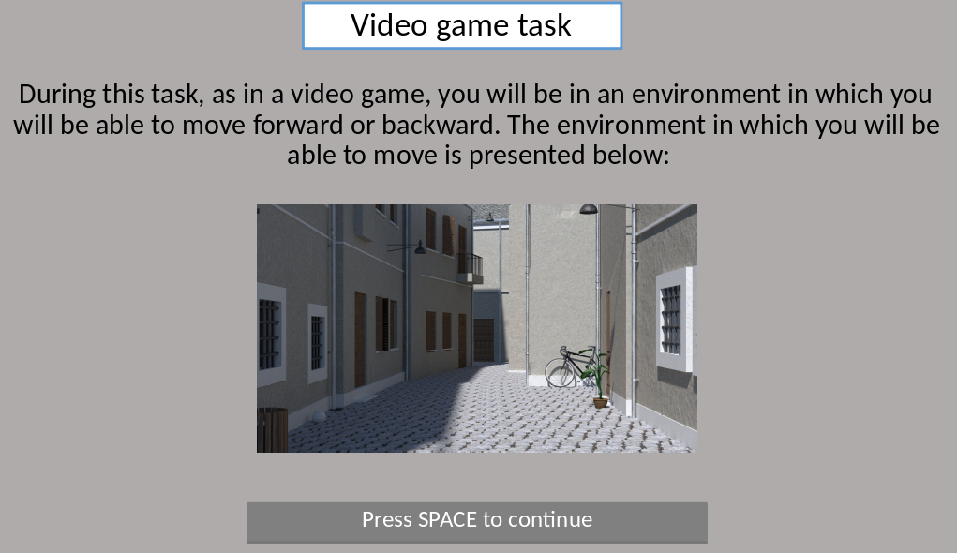by Benoite Aubé, Marine Rougier, Dominique Muller, François Ric and Vincent Yzerbyt
Version 1.01
Introduction
The online-VAAST is a reaction time task measuring spontaneous approach/avoidance tendencies toward two categories of stimuli (e.g., positive and negative words).

In this task, people have to categorize stimuli (e.g., words) as fast as possible. To do so, they have to perform approach or avoidance actions (by using Y and N keys of their keyboard) depending on the category of stimuli. In one block of the task, people have to make "compatible" actions, that is, actions they would naturally perform as approaching positive words and avoiding negative words. In the other block of the task, people have to make "incompatible" actions as approaching negative words and avoiding positive words. We generally observe that people are faster to approach positive stimuli and to avoid negative stimuli rather than the reverse.
In their paper, Rougier and colleagues have shown the VAAST to be efficient in producing approach/avoidance effects (Rougier, Muller, Ric, Alexopoulos, Batailler, Smeding, & Aubé, 2018). The authors showed that the VAAST produces larger effects than the Manikin task, an approach/avoidance task producing the largest effects so far. Interestingly, this task is also able to produce large and highly replicable effects when used as an online procedure with PsyToolkit (Aubé, Rougier, Muller, Ric, & Yzerbyt, 2019).
We hope that the online-VAAST will be useful for any researchers and professionals interested in measuring approach/avoidance tendencies toward different categories of stimuli such as social groups, drug stimuli, phobic stimuli, etc.
About this implementation
We provide a demo with positive vs. negative words. For a good understanding about the design, you need to carefully read the Aubé et al. paper. If you want to implement your own version of the VAAST, please go to the "Online manuals" section. We provide all instructions and materials you need to adapt your own version and to analyze collected data on R software. Another version of the VAAST using images instead of words is also available at this address: Here.
Run the demo
Data output file
| In PsyToolkit, the data output file is simply a textfile. The save line of the PsyToolkit experiment script determines what is being saved in the data output file. Typically, for each experimental trial, you would have exactly one line in your text file, and each number/word on that line gives you the information you need for your data analysis, such as the condition, response speed, and whether an error was made. |
Meaning of the columns in the output datafile.
| Colum | Meaning |
|---|---|
1 |
Block Order (1=compatible first, 2=incompatible first) |
2 |
Block Name (4 blocks including 2 trainings blocksblkTrainingPosAp, blkTrainingNegAp and 2 test blocks blkTestPosAp, blkTestNegAp) |
3 |
Stimuli (Words) |
4 |
Valence (1=positive, 2=negative) |
5 |
Random Fixation (800, 2000) |
6 |
First Key (has to be 3) |
7 |
Movement (1=approach, 2=avoidance) |
8 |
ACC (1=correct, 0=incorrect) |
9 |
Response Time |
Online manuals
Reference files for the online-VAAST
Further reading
-
Rougier, M., Muller, D., Ric, F., Alexopoulos, T., Batailler, C., Smeding, A., & Aubé, B. (2018). A new look at sensorimotor aspects in approach/avoidance tendencies: The role of visual whole-body movement information. Journal of Experimental Social Psychology, 76, 42-53.
-
Aubé, B., Rougier, M., Muller, D., Ric, F., & Yzerbyt, V. (2019). The online-VAAST: a short and online tool to measure spontaneous approach and avoidance tendencies. Acta Psychologica (In Press)
